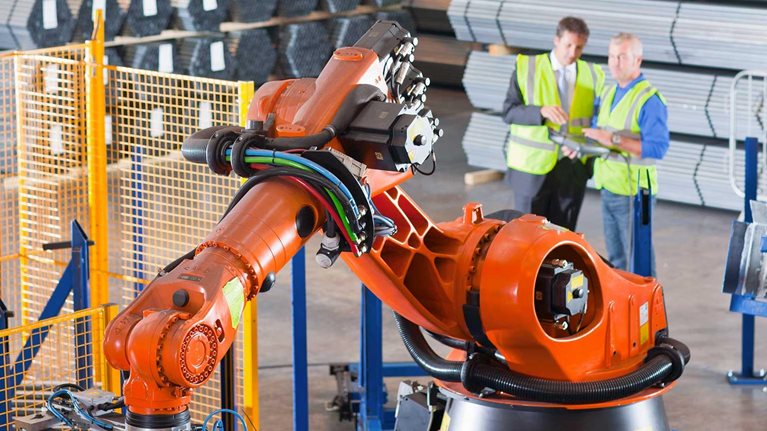The COVID-19 pandemic has underscored manufacturing’s role in providing products that are critical to health, safety, national security, and the continuity of multiple industries. It has also revealed the extent to which global supply chains are exposed to shocks and disruptions. All of this has occurred at a moment when new technologies, process innovations, and demand growth are reshaping the sector worldwide.
The United States can seize on these developments to make its own manufacturing sector more competitive. Starting from a list of 30 manufacturing industries, we identify 16 that can advance productivity and economic growth; jobs and incomes for workers and communities; innovation and competitiveness; or national resilience. Most of them contribute to more than one of these goals. In alphabetical order, they are: aircraft and defense equipment, autos and parts, basic metals, communications equipment, electrical equipment, electronics, fabricated metals, general machinery, medical devices, other transport equipment, petrochemicals, pharmaceuticals, precision tools, semiconductors, special-purpose machinery, and specialty chemicals. Manufacturing is uniquely positioned to strengthen the US recovery over the long term because of its outsize economic contributions (Exhibit 1).

The industries with strong growth prospects include semiconductors, medical devices, communications equipment, and electronics. Those with the greatest potential to support jobs in a wide set of communities include autos and parts, metals, and machinery; collectively, they employ 3.4 million workers and involve 75,000 suppliers. Pharmaceuticals, electronics, semiconductors, and medical devices have high intensities of R&D spending, which underpins innovation and competitiveness. All 16 industries and their supply chains are important to national security, resilience, or emergency preparedness.
Amplifying the contributions of these industries starts with regaining lost ground. Although absolute output has grown, the past two decades have been marked by declines in the US shares of global manufacturing GDP and gross sales (Exhibit 2). In real value added terms, growth has slowed dramatically over the past three business cycles, from 4.9 percent in the 1990s to 1.4 percent in each of the last two decades—and much of that recent growth has been driven by design, services, and software activities rather than actual production. The US trade deficit in manufactured goods more than doubled in the most recent decade. Increased import dependence has left some key US supply chains exposed to greater global risks.

This erosion reflects the competitive dynamics in key manufacturing activities. We see four major activity types in manufacturing, each with distinct factor inputs, operational characteristics, investment profiles, and occupational mix. A given industry (or even an individual manufacturing company) may contain a mix of these activities, and that mix may evolve over time.
- Scale-based and standardized activities (exemplified by auto parts and metal foundries) involve large investments in physical capital, high plant utilization, and standardization of parts and processes. They may feature long supply chains that extend economic impact over a wide area.
- Learning-curve activities (seen in semiconductor fabs and the production of lithium-ion batteries) invest time, capital, and engineering to achieve exponential process improvements. Each successive product generation drives productivity gains.
- R&D- and design-driven activities (such as the development of new pharmaceutical biologics, or the design of next-generation digital devices) draw on large investments in research, intellectual property, design, software, and other intangibles to create differentiated and market-leading products. although their actual production is often outsourced.
- Flexible and customizable activities (seen in aerospace parts and medical devices) use increasingly digital production technologies to reduce the scale necessary to be profitable, making it possible to produce smaller lot sizes. This paves the way for business models built around customization, distributed production, rapid order fulfillment, and after-sales services.
US performance has been mixed across these activity types (Exhibit 3). Over the past 25 years, the US share of global manufacturing GDP in R&D- and design-based activity rose by four percentage points. However, the nation has lost six percentage points of its global share in scale-based activity, a trend that has widened the trade deficit and hollowed out some domestic industries. The US share of flexible activity, too, is down by four percentage points. In learning-curve activities, the United States excels at conceiving new process innovations but struggles to scale them up as broadly as some other countries; its share of global GDP in this segment has fallen by 11 percentage points. The semiconductor industry is a microcosm of these trends. The United States is a world leader in chip design but has fallen behind on producing the next generation of seven- and five-nanometer chips; its share of global production capacity has fallen from 37 percent in 1990 to 10 percent today.

Investor expectations and the relative costs of capital have added to the challenge. Simply put, US manufacturing companies are expected to produce higher returns on capital than their competitors in the OECD and China. The largest have managed to do so, but often through cost cutting that has depressed capital investment and wage growth, squeezed suppliers, or shifted production to lower-cost areas. In scale-based activities, large US manufacturers average returns of 12 to 14 percent, versus 7 to 9 percent for European companies and 5 to 7 percent for Asian counterparts. R&D- and design-based activities are more profitable overall, which has led US companies to gravitate to this part of the value chain and offshore some less profitable activities.
Although demand continues to rise, manufacturing is under pressure worldwide. The average profit for a dollar of capital investment in manufacturing falling by 80 percent over the past two decades. In this environment, even small differences in currency valuations, compliance costs, or input costs can make or break a manufacturer—and most of these trends have not favored the United States.
Despite this, the United States has opportunities to improve its competitiveness. Labor costs have been equalizing over time. The United States matches OECD peers such as Japan and Germany in productivity-adjusted labor costs, while Chinese wages are catching up (Exhibit 4). Technological advances and changing industry structures are also creating opportunities. Industry 4.0 technologies, for example, can raise productivity by up to 40 percent and transform some scale-based activity into flexible production. As US manufacturers reassess supply-chain resilience and focus on speed to market, there is room to increase domestic sourcing. Peer countries tend to meet 80 to 90 percent of domestic demand with regional production, but only 70 percent of US domestic demand is met with locally produced goods.

Capitalizing on these opportunities would require an integrated strategy grounded in the competitive realities facing companies in different parts of the value chain. Such a plan would need to encourage US companies to catch up with global leaders in technology adoption and process improvements. It would also involve a holistic approach to revitalize networks of small and medium-size suppliers—an effort that could spur new economic activity in small towns across the country.
One of the major issues to address is capital investment. In scale-based manufacturing, for example, we estimate that it would take $15 billion to $25 billion annually over the next decade to upgrade aging plants and equipment with Industry 4.0 technologies—and capital needs to flow to some 120,000 small and medium-size enterprises. The investment needs differ in learning-curve activities. It can take $20 billion to build a single new large-scale five-nanometer semiconductor fab, for instance, with the cost doubling every two to four years across succeeding product generations and a very long investment horizon.
The United States also needs more specialized manufacturing talent. The R&D- and design-based activities that can boost future output growth and competitiveness require more scientists, product designers, and software developers. Learning-curve activities need specialized engineers, production technicians, and industrial operations managers, all continually building on their existing know-how and experience. Meanwhile, scale-based activity is becoming more digitized and automated, which calls for higher-level skills—and upgrading existing jobs to attract the next generation of workers, perhaps from other industrial sectors. Private companies should be able to shoulder their own workforce training, and they will be in a better position to do so once their underlying economic health improves.
If the United States can improve competitiveness in the 16 manufacturing industries listed above, the direct and indirect effects could boost the sector’s annual GDP by more than 15 percent above baseline forecasts while adding up to 1.5 million jobs (Exhibit 5). The multiplier effect would be felt across a far wider and more diverse geographic area than an equivalent GDP gain in tech or finance. Renewing the capital stock in these industries could get billions of dollars of investment flowing, setting off a virtuous cycle of increased economic activity in communities that sorely need it.

The stars could be aligning for US manufacturing. There is both public- and private-sector resolve to shore up a sector that has long been an important pillar of the economy. This momentum, combined with technology trends and market opportunities, offers a rare chance to change the existing trajectory—and give the United States a powerful driver for economic recovery, inclusive growth, resilience, and the capabilities of the future.


